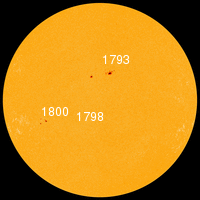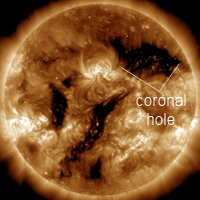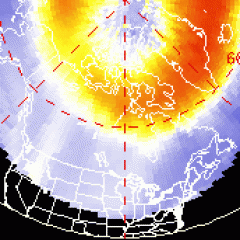
speed: 401.2 km/sec
density: 4.0 protons/cm3
explanation | more data
Updated: Today at 0107 UT
6-hr max: B4 2040 UT Jul21
24-hr: C3 0844 UT Jul21
explanation | more data
Updated: Today at: 2359 UT

QUIET SUN:
Solar activity is low. The biggest sunspot on the Earthside of the sun, AR1783, has been quiet for days even though it has a 'beta-gamma' magnetic field that harbors energy for M-class solar flares. NOAA forecasters estimate a slim 10% chance that AR1783 will break the quiet with an M-flare on July 21st.Current Auroral Oval:
Credit: NOAA/POES
Now: Kp= 2 quiet
24-hr max: Kp= 2 quiet
explanation | more data
Btotal: 5.1 nT
Bz: 2.0 nT north
explanation | more data
Updated: Today at 0107 UT
Coronal Holes: 21 Jul 13












No comments:
Post a Comment
Hello and thank you for visiting my blog. Please share your thoughts and leave a comment :)